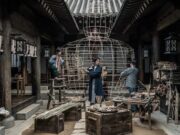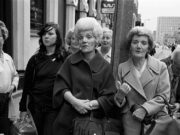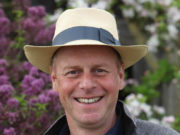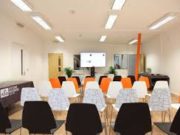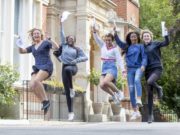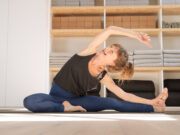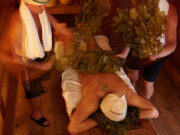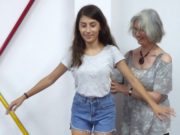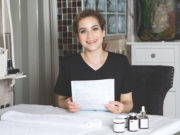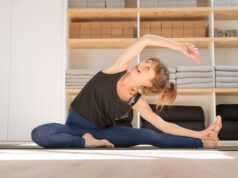The Alexander Technique was developed in the 1890s by Frederick Matthias Alexander, born in Tasmania in 1869. Australian actor lost his voice and found a remarkable way to improve posture, performance, and to help alleviate many back problems and other conditions. It has now been around for well over a century and has become renowned for its effectiveness in improved health and performance.
Many celebrities of the day sought out Alexander for private lessons. They included the great English actors Sir Henry Irving, Viola Tree, and Oscar Asche, writers Aldous Huxley and George Bernard Shaw, Lady Clementine Churchill, Israeli Prime Minister David Ben-Gurion, Archbishop of Canterbury William Temple, the Viceroy of India, the Earl of Lytton, and the American educator and philosopher John Dewey.
Whether you play an instrument or spend long periods in front of a screen, the Alexander Technique can support in optimising your posture with less strain, giving you more energy for the task at hand.
We interviewed Hackney – resident Alexander Technique teacher, Hilary King to find out more about how this technique can help our community.
Can you tell about yourself? What’s your background? How did you first hear of the Alexander Technique and what made you want to learn and then teach it?
I originally trained and worked in Classical Ballet. I’ve lived in the Stoke Newington area since working in Sadler’s Wells Opera Ballet and have taught the Alexander Technique in Stokey for 33 years. I first heard about the AT from orchestral musicians at Sadler’s Wells but sadly I did not take lessons until some years later.

After I stopped dancing I needed to re-train and took a degree in Psychology. As a newly divorced single parent with two small children, I found this very stressful and I realized that if I continued working in such a stressed-out manner, I could end up getting ill. Luckily for me one of my lecturers was also an Alexander teacher and I started taking lessons, which transformed how I got through college. My thinking was clearer, I gained a tool which helped me manage stress and my grades improved as a result. Alexander lessons also helped sort out an old back problem I’d had since I was a dancer. So, after obtaining my degree, I decided to train in the AT and attended a STAT recognised 3 year Alexander teacher training course. I qualified in 1987 and I have enjoyed teaching ever since and the AT has been a valuable resource that has helped me personally, throughout my life.
What is the Alexander Technique? Why is it useful?
The Alexander Technique is a form of body-mind re-education that we learn and can use throughout our lives. It is not a therapy or treatment. Teachers use gentle hands-on contact to help clients recognize any unhelpful habits and reactions they have to stimuli whilst performing everyday movements such as sitting, standing walking and computing. These habits of mis-use and over-use often result in conditions such as back pain, headaches and RSI. Pupils gradually learn to let go of unhelpful habits, which enables them to choose a different way of being and acting in the world. This helps people reduce pain, move more freely and generally increase their sense of wellbeing. Most pupils really enjoy their lessons!
Many colleges and schools are including the Alexander Technique into their curriculum. Helping young people to avoid developing harmful habits of body use, is an important and valuable application of the AT.
Is it hard to learn this technique?
At one level, the Technique is very simple and easy to learn but you do need a teacher because our old habits are so strong. All ages, from young children to pensioners can enjoy learning the AT. Research has shown that you can get some help for back pain with just 6 lessons but if you want sustained changes, it takes 20 or more lessons to bring these about. It is a bit like learning to play the piano. After my first piano lesson I was pleased to play hot cross buns – but if I wanted to play some Mozart, I needed many more lessons!
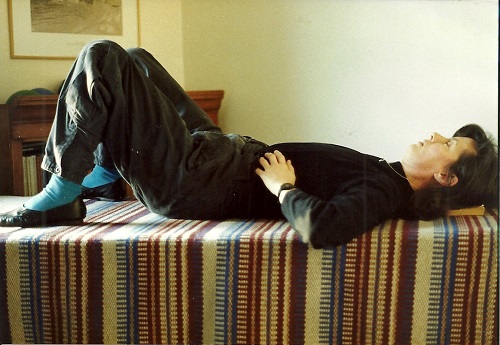
To get benefit from the Technique how much effort is required from the student?
Very little physical effort is required, so anyone can learn the Alexander Technique. We need to develop awareness of our habits of body-use and how our thoughts and emotions influence them. We also need self-discipline, to apply the AT during everyday activities, plus be willing to allow ourselves to let go and change from being ruled by our old habits.
Are there any problems that you can help with especially?
The Alexander Technique is well known for helping people with back and neck pain, RSI, posture, pregnancy, musicianship, acting, tension and stress. Increasingly, the AT is also recognised for helping people improve their performance in sports and yoga, plus help with conditions associated with aging, hypermobility and Parkinson’s.
Can you get treatment on the NHS or with private health insurance?
The NHS website states ’some NHS trusts have started to offer Alexander technique lessons as part of their outpatient pain clinics. Ask your GP whether it’s available through the NHS in your local area’. A number of insurance companies include lessons in the Alexander Technique.
What does mainstream medicine think of the Alexander Technique?
As more research into the Alexander Technique is undertaken, medical practitioners increasingly refer people to AT lessons and I have had several referrals from doctors. A wider range of research is needed, if funding were available, which could support anecdotal reports on the benefits of having AT lessons. You can see a list of research papers here.
What’s the benefits on psychology?
The Alexander Technique is a self-help tool that we can use in many different situations. It can help us relax, calm our minds, feel less anxious and more positive. It also enables us to feel more comfortable in our bodies, which in itself can be very healing. Having a tool to help ourselves cope with difficulties, can also help us avoid feeling powerless.
You have been teaching this technique for years. What did your clients gain through learning the Alexander Technique?
Many clients reduce headaches, RSI, back and neck pain. They also feel calmer and able to work and perform better. Pupils gain a skill they can use throughout life and several have gone on to train as Alexander teachers.
While we’re staying home due to coronavirus, can you recommend us some techniques that might help us to feel positive?
Coronavirus is a challenge to us all. The AT is a hands-on procedure so it’s not possible to give traditional lessons at the moment. However various online options are being developed. I’m not alone when I say that the Alexander Technique has been invaluable to me during self-isolation. Being mindful of how I am using my body and choosing how I respond to things, helps me stay calm and avoid getting depressed, for instance.
The Active Rest lying down procedure is something people can begin to use now, without having had lessons. Lie down on the floor (or grass if you have a garden) for 10 – 20 minutes and be aware of your mind, your body and your surroundings. Stay alert but quiet. Bend your knees, rest your feet on the ground and put a couple of books under your head so that your neck is reasonably straight. Allow your mind to calm and allow your body to unwind and expand into its full length and width. This can help you reduce tension and back pain as your neck and back muscles unwind, for instance. Just notice any changes that begin to take place in yourself as you lie there. Allow the inner quiet to be with you as you get up to move.
You can find more detailed information about using this procedure and about the Alexander Technique generally on my website: https://www.hilaryking.net/.










